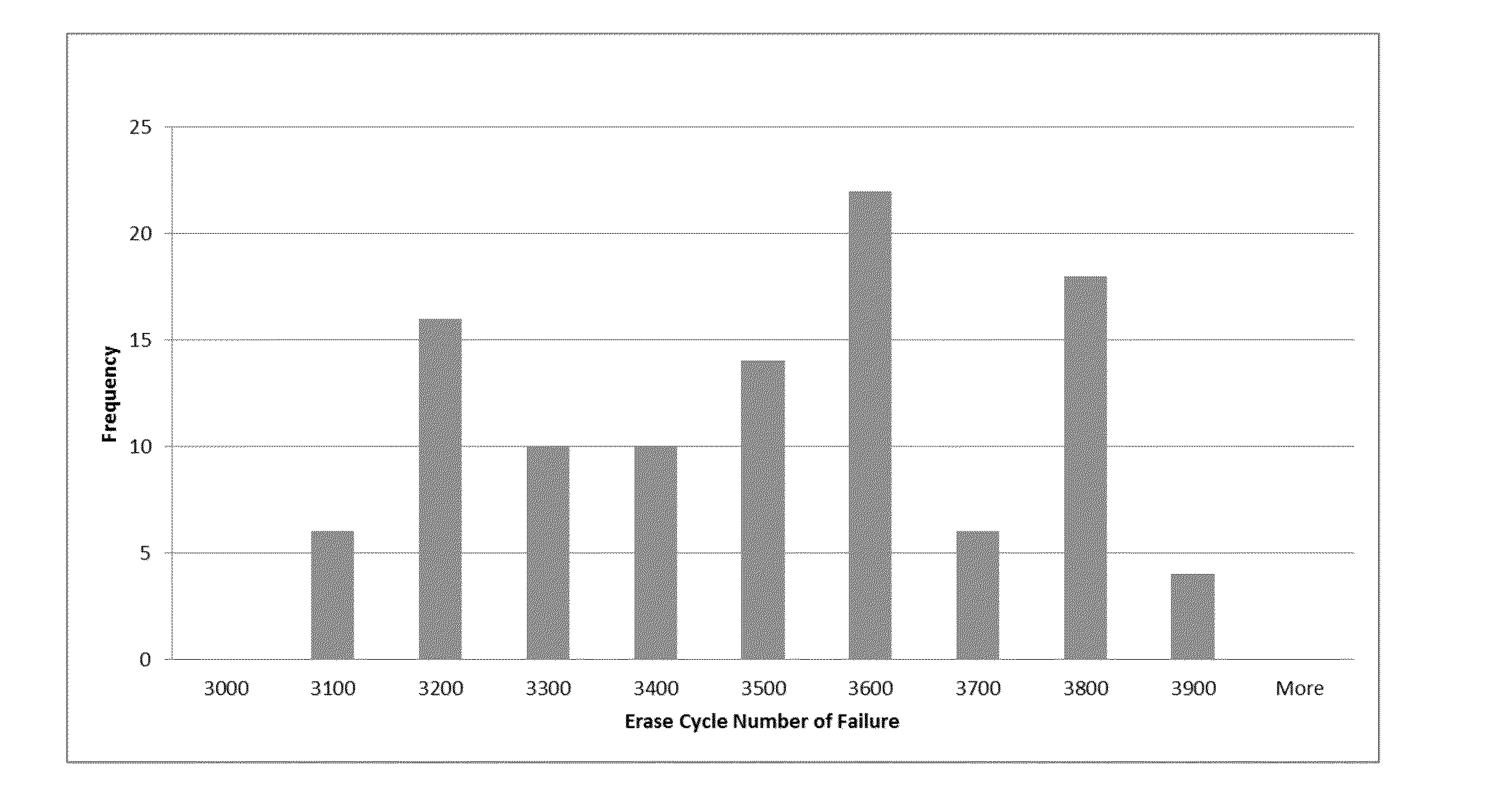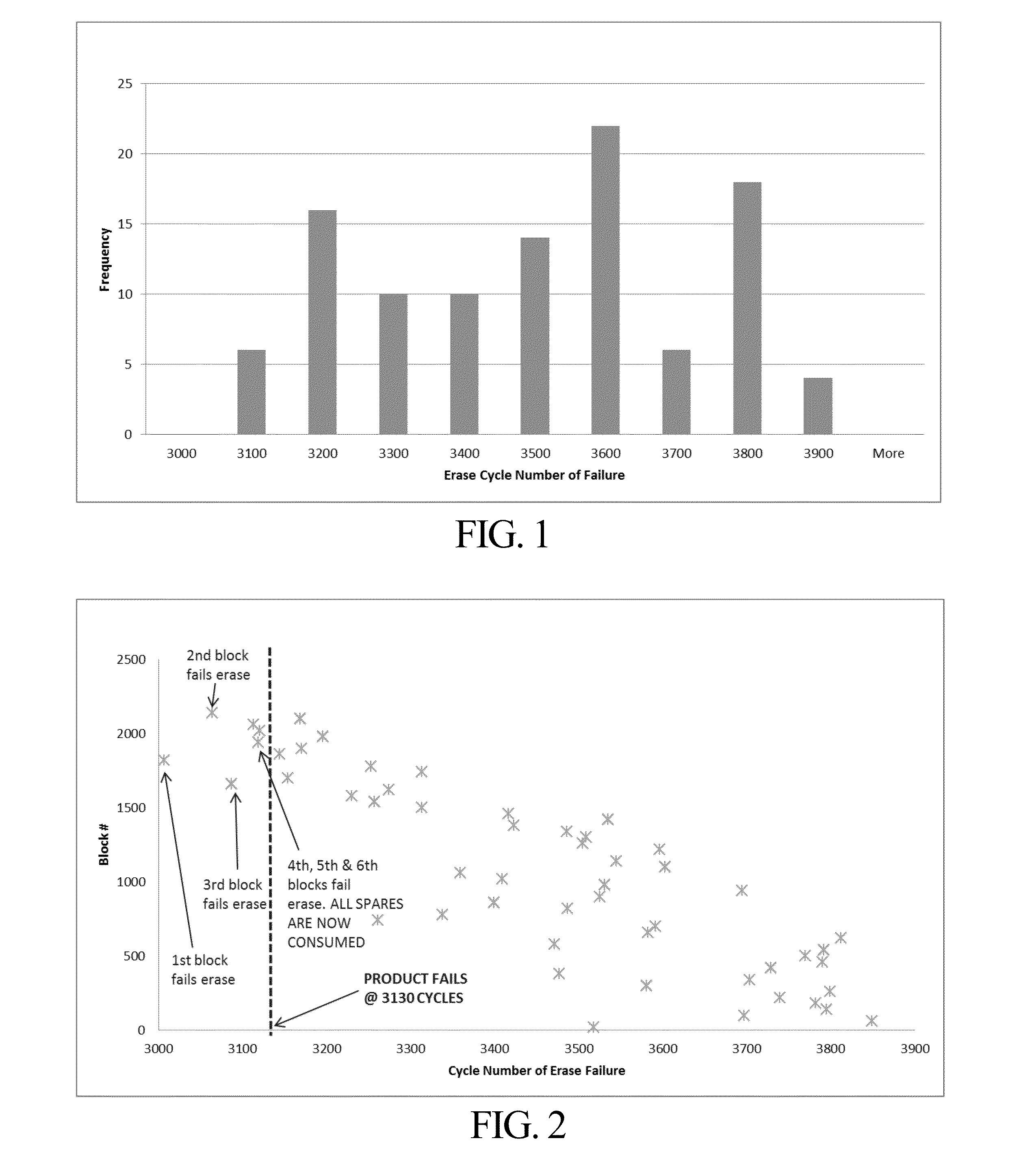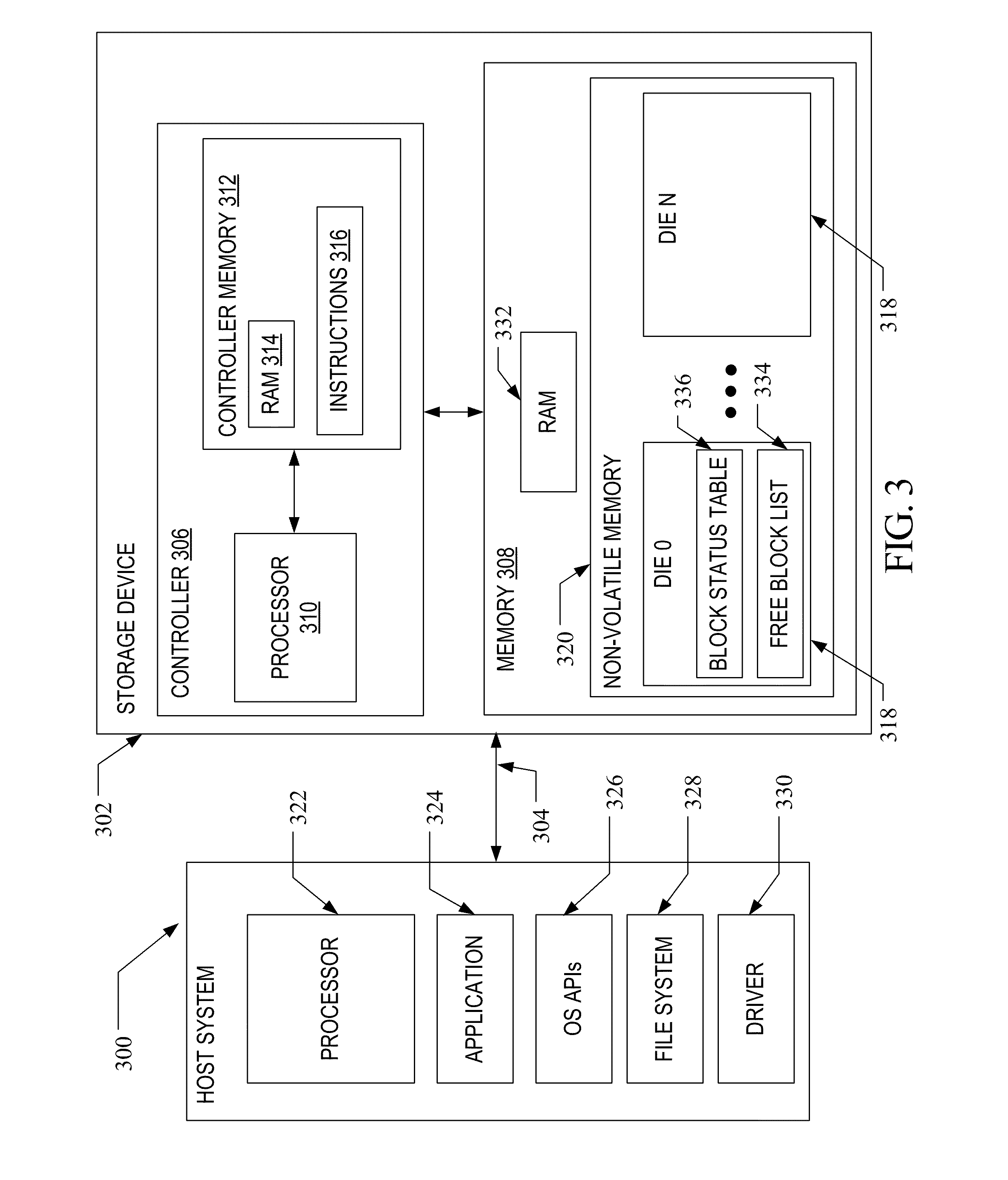Method and system for predicting block failure in a non-volatile memory
a non-volatile memory and block failure technology, applied in the direction of memory adressing/allocation/relocation, instruments, input/output to record carriers, etc., can solve the problems of flash storage systems generally failing, storage systems that fail, waste of blocks with more remaining life, etc., to improve the overall life of storage devices, reduce wear burden, and increase wear burden
- Summary
- Abstract
- Description
- Claims
- Application Information
AI Technical Summary
Benefits of technology
Problems solved by technology
Method used
Image
Examples
Embodiment Construction
[0028]A method and system for predicting which blocks in a non-volatile memory are going to fail first, and application of that knowledge to improved management of those memory blocks, are disclosed herein. In one embodiment, a metric on which the prediction of block erase cycle life is based is the erase cycle count at which point a block first exceeds a threshold amount of time to successfully erase. One or more threshold erase times may be tracked for each block as described in greater detail below.
[0029]A non-volatile memory system suitable for use in implementing aspects of the invention is shown in FIG. 3. A host system 300 stores data into, and retrieves data from, a storage device 302. The storage device 302 may be embedded in the host system 300 or may exist in the form of a card or other removable drive, such as a solid state disk (SSD) that is removably connected to the host system 300 through a mechanical and electrical connector. The host system 300 may be any of a numb...
PUM
 Login to View More
Login to View More Abstract
Description
Claims
Application Information
 Login to View More
Login to View More - R&D
- Intellectual Property
- Life Sciences
- Materials
- Tech Scout
- Unparalleled Data Quality
- Higher Quality Content
- 60% Fewer Hallucinations
Browse by: Latest US Patents, China's latest patents, Technical Efficacy Thesaurus, Application Domain, Technology Topic, Popular Technical Reports.
© 2025 PatSnap. All rights reserved.Legal|Privacy policy|Modern Slavery Act Transparency Statement|Sitemap|About US| Contact US: help@patsnap.com



